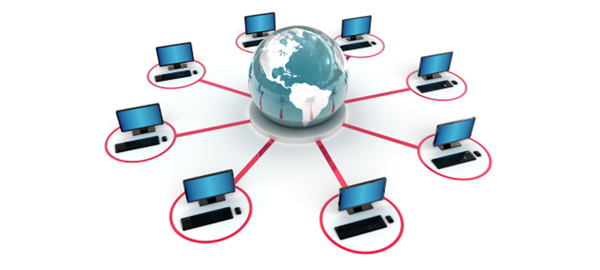Over the past year, the Internet of Things (IoT) has become a buzzword in business, technology, and B2B and B2C commerce – with less emphasis placed on the internet than on the things. But what is the Internet of Things, exactly? In 2015, it means the interconnection of everyday items and devices that transmit data through the internet, either about the item/device, its users, or its surrounding environment. Enterprises across many industries, particularly in consumer packaged goods (CPG), manufacturing, retail, and the services/utilities industries have already begun adopting “smart” technologies to improve business processes, customer service, and operational readiness. By 2019, Business Insider estimates that IoT will add $1.7 trillion in value to the global economy, with tens of billions of commercial, enterprise, and governmental devices connecting to the internet and transmitting data.
In 2015, the Internet of Things has already caught on in everyday use; many people outside of the business and technology worlds generally know what it is and how it can improve their lives. For example, smart, Wi-Fi-enabled thermostats learn preferred temperatures depending on the day and time of day; and users can interface with them to adjust the controls from their mobile devices. Home appliances and security systems can also be controlled by mobile applications. And many utility companies can now measure meters remotely rather than dispatch technicians to manually collect the data. While this is just scratching the surface of how the Internet of Things can improve personal lives, what will it mean for enterprise procurement teams?
The short answer is that IoT will transform the way that people, processes, and technologies drive value through the enterprise procurement process; and in some ways, this has already started. Here’s a look at each player in the procurement game and how their role will transform via the Internet of Things.
Technology
Since the Internet of Things is mostly about the “things,” the logical place to start is with the technological advances that are driving procurement process innovation and automation. Everyday devices that contain processors, sensors, and an internet connection will monitor and report on a growing number of direct and indirect spend categories for procurement teams and ultimately reduce manual monitoring and reporting. Direct spend categories, such as inventory, can be monitored and managed via sensors in warehouses that measure the volume, quantity, or quality of a commodity. They can also automatically place orders for new inventory when they reach a certain level.
Indirect spend categories, such as building or machine maintenance (in CPG or manufacturing) can be aided by sensors that monitor system “health” and “life expectancy”, so that as systems, machines, or components malfunction or near the end of their “lives,” service can be scheduled or replacements can be ordered. Travel and expense (T&E) management can also be transformed by the Internet of Things, as payment cards can send T&E data from the point of sale directly to an expense report that auto-populates without the employee having to compile it. The report is only manually inspected if the expenses fall outside of approved amounts and categories.
Processes
The Internet of Things is the latest step forward in procurement process automation that has allowed a growing number of procurement teams to “do more with same,” converge with other business units, and wield greater influence across the enterprise. As a result of IoT, more procurement responsibilities and tasks that are largely tactical can be automated, enabling procurement leaders and line-of-business users to be more strategic. The Internet of Things will allow procurement practitioners to “connect the dots” faster and more efficiently throughout the procure-to-pay (P2P) process, who will only drop down into the weeds when there are exceptions (e.g., rejected expense reports, or supplier on/off-boarding). As procurement’s influence and reach converge across the enterprise, one of the challenges it will face will be to align processes and systems with other business units. This challenge may be exacerbated by the Internet of Things, as different business units develop different processes and have different needs for IoT. Part II of this series will discuss more about this challenge in.
People
As procurement adopts greater process automation and collects greater volumes of business intelligence data, it will become even more important – and challenging – to find the right mix of talent to locate, harness, interpret, and communicate the meaning of all this information. Indeed, a majority of Chief Procurement Officers (57%) who recently participated in Ardent’s most recent research study indicate that staff/talent constraints are a challenge for them in 2014 and beyond. Ardent Partners expect this challenge to grow, particularly as procurement organizations move away from manual, paper-based systems and processes towards automated, electronic systems and processes that are becoming ever more common within the Internet of Things. As a result, Chief Procurement Officers will place an even higher premium on technological skills, particularly in data warehousing and analysis. Whereas before, a CPO may have wanted an MBA with a passion for procurement, now he or she may want a data scientist who can build them a dashboard and fuse all of the data streams.
Final Thoughts
It may be too soon to forecast how far and wide the Internet of Things will affect procurement operations. Those that can afford to upgrade their systems and processes to accommodate the Internet of Things stand to automate much of their processes and gain greater bandwidth for their teams, allowing them to become more strategic in their approach. But these teams should also be ready for streams of data that will flow into their organizations. If procurement cannot harness the power of Big Data, it may not maximize the true value of the Internet of Things.
RELATED ARTICLES
Technologies that Make P2P Automation Possible
Is Procurement Due for a Black Swan Event?

